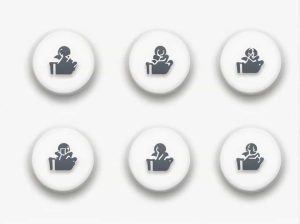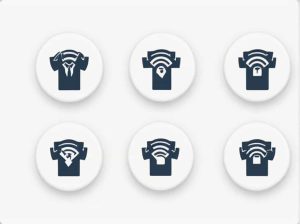Judgmental forecasting is a method that relies on expert opinions experience and intuition to predict future outcomes. While this approach can be useful in situations where historical data is limited or when human insight is required it also has several limitations that can impact its accuracy and reliability.
This topic explores the key limitations of judgmental forecasting how they affect decision-making and potential ways to improve its effectiveness.
What Is Judgmental Forecasting?
Judgmental forecasting is a qualitative forecasting method where predictions are based on human judgment rather than statistical models or historical data. It is commonly used in business economics and strategic planning when numerical data is insufficient or when expert insight is necessary.
Examples of Judgmental Forecasting
- Market trend predictions by industry experts.
- Sales forecasts based on managerial experience.
- Economic forecasts made by policymakers.
- Demand estimation for new products.
While judgmental forecasting is valuable in many scenarios it has several limitations that can lead to inaccurate predictions.
Key Limitations of Judgmental Forecasting
1. Subjectivity and Bias
One of the biggest limitations of judgmental forecasting is its reliance on human judgment which is prone to bias. Personal opinions past experiences and emotions can influence decisions leading to inaccurate or misleading forecasts.
Common Biases in Judgmental Forecasting:
- Confirmation Bias – Preferring information that supports existing beliefs.
- Overconfidence Bias – Overestimating the accuracy of predictions.
- Recency Bias – Giving more importance to recent events than long-term trends.
- Groupthink – Making decisions based on peer pressure rather than independent analysis.
2. Lack of Consistency
Judgmental forecasting lacks a standardized process meaning that different individuals may arrive at different conclusions based on the same information. This inconsistency makes it difficult to replicate results and reduces the reliability of forecasts.
For example two managers predicting future sales might have different opinions based on their personal experiences leading to conflicting forecasts.
3. Difficulty in Handling Large Data Sets
Unlike statistical forecasting which can analyze vast amounts of data judgmental forecasting is limited by human cognitive capacity. It is difficult for individuals to process large complex datasets without introducing errors or overlooking important details.
As a result this method is less effective for big data analysis and situations requiring detailed numerical evaluation.
4. Prone to Emotional Influence
Human emotions can play a significant role in judgmental forecasting. Optimism fear or personal preferences can lead to irrational decision-making which may result in overestimating or underestimating future outcomes.
For example during economic downturns businesses may underestimate recovery rates due to pessimism leading to overly cautious decisions.
5. Limited Use in Fast-Changing Environments
Judgmental forecasting may not be suitable for industries or markets that change rapidly. Since it relies on past experiences and intuition it may fail to adapt to new trends technologies or unexpected events.
For instance forecasting consumer behavior in the technology sector using only expert judgment may lead to inaccurate predictions as trends change quickly due to innovation.
6. Lack of Measurable Accuracy
Unlike statistical forecasting methods which provide measurable error margins judgmental forecasting does not have a clear way to assess accuracy. Without numerical validation it becomes difficult to determine whether forecasts are reliable or need adjustments.
For example a company using expert opinions to forecast next year’s sales may not have a systematic way to measure whether their predictions were correct or not.
7. Dependence on Expertise
The quality of judgmental forecasts depends heavily on the knowledge and experience of the individuals making the predictions. If the experts lack sufficient knowledge their forecasts may be inaccurate or misleading.
This limitation becomes more evident when businesses rely on a single person’s opinion rather than multiple perspectives.
Ways to Improve Judgmental Forecasting
While judgmental forecasting has limitations businesses can take steps to improve its effectiveness:
1. Combine Judgmental and Quantitative Methods
Using statistical models alongside expert judgment can improve forecast accuracy. For example businesses can use historical data analysis and supplement it with expert opinions to make better decisions.
2. Reduce Bias Through Structured Decision-Making
Implementing a structured approach such as Delphi Method where multiple experts provide anonymous feedback can reduce personal biases and improve reliability.
3. Use Data to Support Intuition
Encouraging experts to use data-driven insights rather than relying solely on experience can improve forecast accuracy. Charts market trends and industry reports can provide objective support for predictions.
4. Regularly Review and Adjust Forecasts
Since judgmental forecasts can be affected by unforeseen events businesses should regularly update and validate predictions based on new information.
5. Encourage Diverse Perspectives
Seeking input from multiple experts with different backgrounds can help eliminate bias and provide a more balanced forecast.
Judgmental forecasting is a valuable tool in business decision-making but it has several key limitations including subjectivity inconsistency emotional influence and difficulty handling large data sets. These challenges can lead to inaccurate predictions affecting strategic planning and business performance.
To improve judgmental forecasting businesses should combine it with data-driven methods reduce bias and seek diverse expert opinions. By addressing its limitations companies can make more reliable and informed decisions ensuring better outcomes in an unpredictable business environment.



